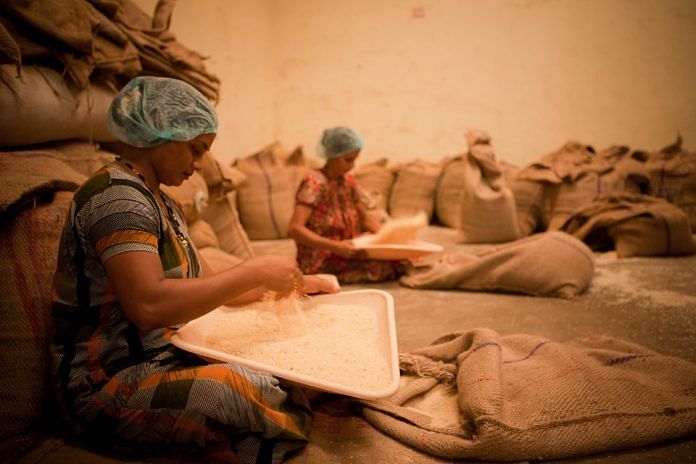Women are still paid less, female bosses are still in the minority and motherhood still carries the risk of total career derailment.
Women’s marches, protests and the #MeToo campaign may paint a picture of women smashing through centuries of sexual inequality, but in many, very measurable ways, the push for progress is far from over. Especially when it comes to that old-yet-not-outdated foe, the workplace glass ceiling.
Women are still paid less, female bosses are still in the minority and motherhood still carries the risk of total career derailment. And all this despite record numbers of women joining the workforce over the past decade.
So, what’s going on? If almost half of all the world’s women are now in employment, according to the latest edition of the Global Gender Gap Report, why are only 31% leading their field? To mark International Women’s Day, we explore some of the most persistent forces working against women’s rise to the top, whether it’s the household chores that drag them out of the race for top jobs, the employer who sidelines them for taking time off, or the spiralling pensions deficit that leaves many near penniless in old age.
We’ve collected a few of these perspectives here.
1. It’s 2018 and yes, women are still paid less.
And may continue to be for another two centuries, according to Gender Gap data. British women, who earn nearly a fifth less than their male colleagues, “effectively work for free for the first 67 days of the year”, according to the TUC. You can find more surprising economic facts behind the gender wage gap in this video.
2. There’s no refuge in retirement, either.
With women routinely earning less and for less time than men, many are entering retirement with rattling pension pots. It’s a disturbing prospect for many women, who require more money for healthcare and can reasonably expect to outlive men by a number of years. So why are retired women out of pocket?
3. #MeToo has left some working women out in the cold
The campaign has helped thousands of women stand up to sexual harassment, but it has had some unexpected consequences too. Many powerful men report feeling reluctant to sponsor female colleagues, for fear of rumours. Here’s how companies can help
4. Domestic duties are slowing women’s progress
Studies have shown that women shoulder most of the burden of housework and family care, even if they work as many employed hours as their partner. The constant round of wiping and worrying can have a corrosive effect, leaving them too weary to take on high-profile projects or compete for the top jobs. Is men’s aversion to chores stalling women’s careers?
5. No one will hire a stay-at-home mum – it’s official
It turns out your reluctant-housewife friend was right: employers really do discriminate against women who take time out of work to look after children. Recent research has found that stay-at-home mothers are half as likely to be asked in for an interview than a woman who was employed but made redundant. So, what have companies got against housewives?
But it’s not all bad
Despite this gathering of gloomy perspectives, more broadly the outlook is actually brightening for women in the working world. According to a recent PwC survey, women have become more ambitious than ever: 82% are confident they’ll reach their career goals and 77% think they make a good leader. There’s more: it turns out that when women negotiate for pay rises and promotions, they often succeed.
Here are 3 other things that can help women succeed at work.
Anna Bruce-Lockhart is an editor at the World Economic Forum, Geneva.
This article was first published by www.weforum.org. Read the original article here



